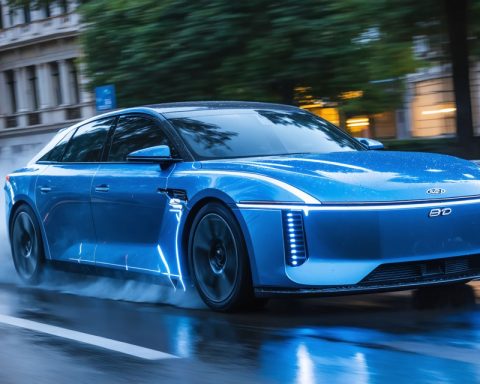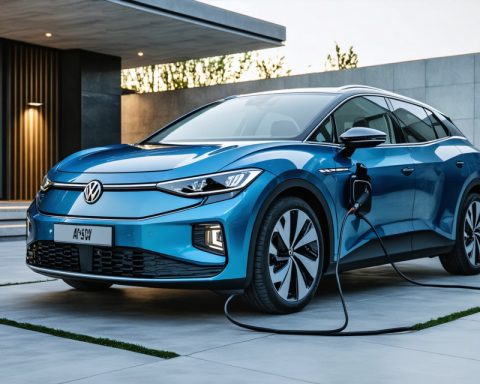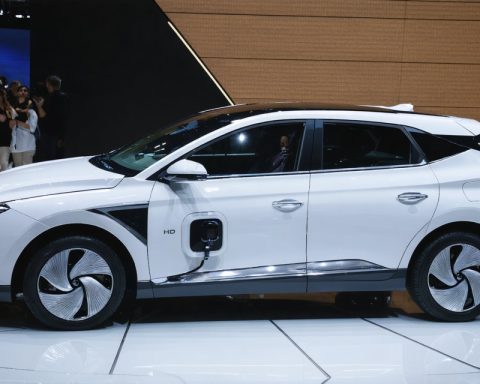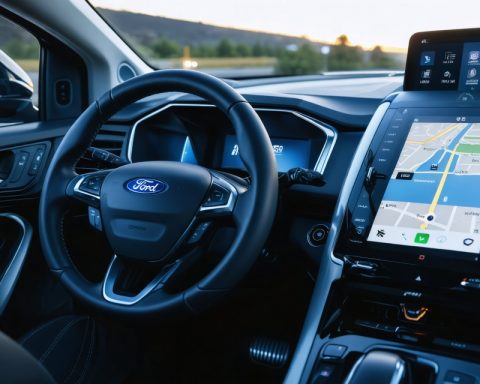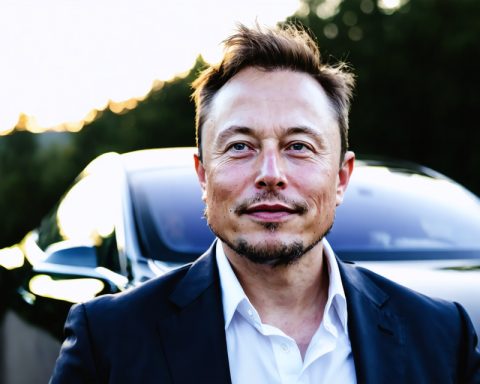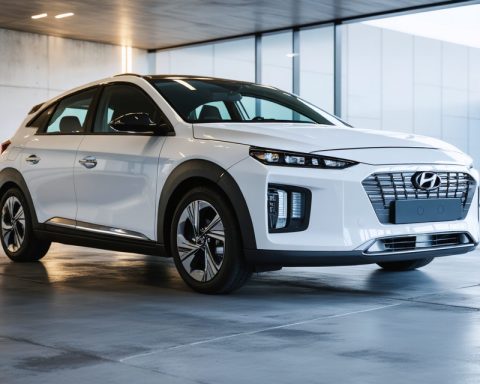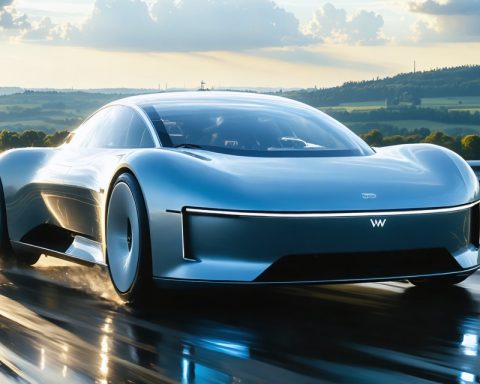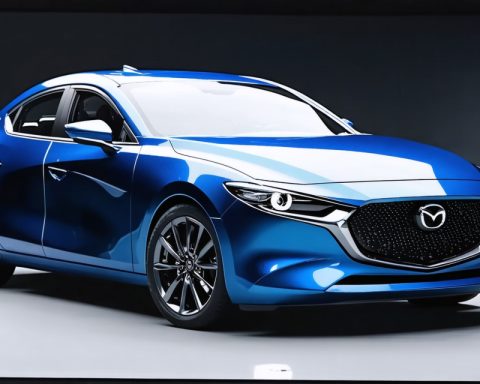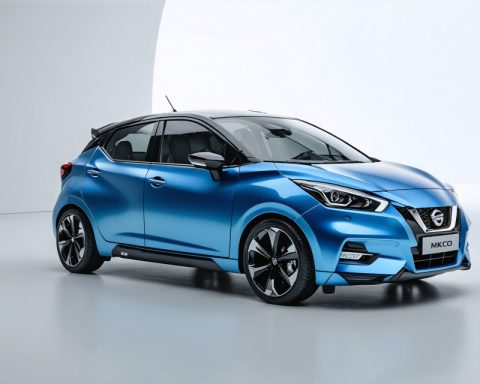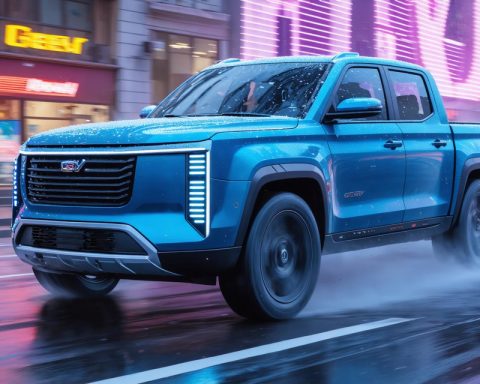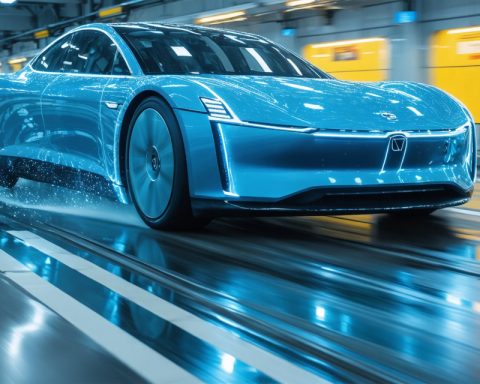- BYD surpasses Tesla in 2024 revenues with $107 billion compared to Tesla’s $97.7 billion, reshaping the global EV market landscape.
- Dominating China’s auto market, BYD leads in electric and hybrid sales, capturing over a third of the market share.
- Government policies and climate-driven subsidies bolster BYD’s growth, achieving 10 million new energy vehicles production.
- BYD matches Tesla closely in pure EV sales, with 1.76 million to Tesla’s 1.79 million units, and excels with 4.27 million total vehicle deliveries including hybrids.
- Reporting a 73% profit increase in Q4, BYD plans global expansion, significantly boosting exports, and targets a new plant in Germany.
- Analysts predict a 15% annual earnings growth for BYD, projecting a 24% ROE and highlighting its potential as a dominant automotive player.
- The company’s trajectory suggests a promising future with strong buy ratings and optimistic price targets.
The towering giants of the electric vehicle world—Tesla, long seen as the industry’s crown jewel, has now found a worthy adversary in BYD. With a flourish of electric and hybrid prowess, BYD has surged ahead, reshaping China’s automotive topography and sending ripples across the global EV industry. Possessing a robust strategy that blends innovation with aggressive market expansion, BYD has struck gold, reeling in 2024 revenues of $107 billion, eclipsing Tesla’s $97.7 billion.
China, the world’s largest auto market, has become BYD’s fortress. Spearheading the charge in electric and plug-in hybrid sales, the company captures more than a third of the market—a position that is no mere happenstance, but a testament to its relentless pursuit of growth. The numbers testify: a staggering sales record throughout 2024, bolstered by favorable government policies designed to expedite the transition from fossil fuel to electric.
As subsidies fueled by an urgent global climate narrative revive a previously declining market, BYD’s visionary leadership under Wang Chuanfu propels the brand forward. Their saga tells an electrifying tale—one of 10 million new energy vehicles rolled off assembly lines, besides expanding their technological reach into batteries and electronics.
In a head-to-head sales comparison, both BYD and Tesla are neck and neck in pure EV units—1.76 million versus Tesla’s 1.79 million. However, the inclusion of hybrid models shifts the tide noticeably in BYD’s favor. Their total passenger vehicle deliveries soared to 4.27 million units, rivaling the likes of Ford Motor Co.
With such triumphs in its financial sails, BYD soars through the stock market skies. Reporting a 73% jump in fourth-quarter profit, the company now eyes global expansion with keen interest. An ambitious 72% rise in exports highlights their shift beyond China’s borders, eyeing Germany for a potential third European plant.
For investors, the horizon looks promising. Analysts predict an impressive 15% annual earnings growth, reinforcing BYD’s potential as a titan in the making. With a projected earnings per share growth at 15% annually and ROE expected to reach a lofty 24%, BYD appears poised to redefine what’s possible in the automotive world.
As BYD charges ahead, confidence from analysts echoes alongside with resilient buy ratings and robust price targets, suggesting an upward trajectory that seems unstoppable.
So, the question of whether BYD can maintain its momentum isn’t just speculative—it’s grounded in numbers, strategy, and an unwavering eye on the future. In this resounding shift, BYD’s relentless evolution captures attention, paints hope for a cleaner transportation future, and challenges the status quo. Bound not just to lead, but to redefine the electric frontier.
Can BYD Continue to Outpace Tesla in the Electric Vehicle Race?
Introduction
In the dynamic world of electric vehicles (EVs), the competition between Tesla and BYD has intensified, with BYD making significant strides in the marketplace. As the automotive industry undergoes a profound transformation towards sustainability, understanding the key differentiators and future potential of these two giants is crucial.
Additional Facts and Insights
1. Technological Advancements: BYD is a pioneer in battery technology. Its Blade Battery, known for its safety and longevity, is significantly impacting EV design and appeal. With a lower risk of thermal runaway, BYD’s battery technology is becoming a reference in the industry.
2. Global Market Strategy: BYD’s aggressive global expansion strategy includes plans to increase its presence in Europe. This includes setting up manufacturing plants and partnering with local dealerships to adapt better to regional markets.
3. Diversified Product Line: Unlike Tesla, which focuses exclusively on electric vehicles, BYD offers a mix of electric and plug-in hybrid vehicles. This strategy caters to a broader audience, particularly in markets where hybrid models are more popular due to underdeveloped charging infrastructure.
4. Environmental and Government Support: BYD benefits significantly from China’s favorable policies for new energy vehicles, including subsidies and tax incentives. The company has also allied with governmental bodies to develop sustainable transport solutions for urban areas, enhancing its domestic market leadership.
5. Research and Development: BYD invests heavily in R&D, prioritizing future technologies such as autonomous driving and Vehicle-to-Grid (V2G) systems. This focus could enable BYD to offer more advanced and integrated solutions to customers.
6. Sustainability Efforts: BYD has made significant investments in sustainable practices, from the production process to the supply chain. The company’s global push towards reducing the carbon footprint aligns with its long-term vision of a green future.
EVs in the Global Market: Trends and Forecasts
– The global EV market is expected to grow at a compound annual growth rate (CAGR) of around 22% from 2023 to 2030, driven by increasing environmental awareness, favorable government policies, and advancements in battery technology.
– China continues to lead the EV market, with over 40% of global EV sales, followed by Europe and the United States.
Real-World Use Cases
– Fleet Electric Vehicles: Many corporations are transitioning their vehicle fleets to electric models, where BYD plays a significant role, particularly in public transportation such as electric buses, which BYD has specialized in for years.
– Urban Mobility: City councils are considering BYD models for urban mobility solutions, focusing on reducing emissions and enhancing air quality.
Challenges and Limitations
– Competitive Pressure: Tesla remains a formidable competitor with its strong brand, advanced technology, and widespread Supercharger network. BYD must continue innovating to keep pace.
– R&D Funding: While BYD invests significantly in R&D, balancing costs while remaining competitive can be challenging.
– Export Risks: Geopolitical tensions and trade policies could impact BYD’s expansion efforts, particularly in the U.S. market.
Pros and Cons Overview
Pros:
– Comprehensive product portfolio including hybrids and pure EVs.
– Strong presence in China with government backing.
– Innovative battery technology.
Cons:
– Less brand recognition outside Asia compared to Tesla.
– Infrastructure challenges in new markets.
– Direct competition from American and European automotive giants.
Actionable Recommendations
1. Adopt an Electric Future: Consider switching to EVs for potential long-term cost savings, environmental benefits, and alignment with future regulations.
2. Invest Wisely: Both Tesla and BYD represent promising investment opportunities. Diversifying investments in these companies could yield significant returns as the market grows.
3. Stay Informed: Keep abreast of technological advancements and market trends in the EV industry to make informed decisions about purchases or investments.
For more about electric vehicles and related innovations, visit the official sites of Tesla and BYD.
Conclusion
BYD’s ascent illustrates a transformational narrative in the EV industry, driven by strategic market approaches and technological innovation. Whether or not BYD will continue to outpace Tesla globally, its influence on the industry is undeniable. As EV adoption accelerates, consumers and investors alike should pay attention to these trends to capitalize on future opportunities.


